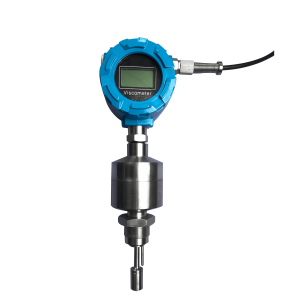In mineral processing, where operational efficiency hinges on precise control of material flow and separation, inline viscosity measurement emerges as a cornerstone for optimizing performance across grinding, flotation, and dewatering stages. By delivering immediate insights into slurry behavior, real-time monitoring enables operators to make swift, data-driven adjustments that enhance throughput, reduce energy waste, and improve product quality. Unlike traditional offline methods, which are prone to delays and inaccuracies, continuous measurement ensures consistent process stability, directly impacting recovery rates and operational costs in demanding industrial settings.
Definition of Viscosity in Mineral Slurries
Viscosity in mineral slurries refers to the resistance to flow exhibited by suspensions of finely ground ore particles in water, influenced by factors such as solids concentration, particle size, shape, and chemical additives. This property governs how slurries flow through pipelines, interact with processing equipment, and respond to mechanical forces, making it a critical parameter for managing flow dynamics and ensuring efficient mineral separation in high-throughput environments.

Mineral Processing Industry
*
Mineral Slurry Processing
The processing of mineral slurries involves multiple stages, each uniquely affected by viscosity, which shapes operational outcomes and resource efficiency.
·Grinding: Viscosity determines mill feed consistency, pulp density, energy consumption, and particle size distribution. High viscosity can lead to overfilled mills, reducing grinding media effectiveness and altering breakage mechanisms, which risks over-grinding fine particles or under-grinding coarser ones, especially in ores with viscous clays like bentonite.
·Flotation: In this stage, slurry viscosity influences pulp rheology, affecting bubble-particle interactions, froth stability, and reagent dosing precision. Optimal viscosity enhances mineral adhesion to bubbles for better recovery, but excessive levels can disrupt cell hydrodynamics, leading to uneven mineral dispersion.
·Thickening: Viscosity impacts settling rates and underflow density, dictating flocculant usage and thickener performance. Properly managed viscosity ensures faster sedimentation and clearer overflow, avoiding issues like sludge buildup.
·Filtration: During dewatering, viscosity affects filter cake formation and efficiency. Controlled viscosity promotes uniform cake buildup and reduces blockages, improving water removal and solid concentration in the final product.
Challenges
Maintaining consistent viscosity measurements in mineral processing is fraught with obstacles that demand robust, automated solutions.
·Abrasive Particles: Coarse or sharp particles erode sensor surfaces, compromising measurement reliability over time.
·Temperature Fluctuations: Variations in slurry temperature alter viscosity, requiring sensors to adapt dynamically.
·Chemical Interactions: Additives like flocculants or reagents can unpredictably shift slurry behavior, complicating readings.
·Particle Settling: Sedimentation in low-flow conditions skews viscosity data, necessitating continuous flow designs.
·pH Variations: Changes in slurry acidity or alkalinity affect rheological properties, demanding adaptable instrumentation.
·Turbulent Flow Noise: High-velocity flows introduce measurement errors, requiring noise-filtering technology.
·Vertical Installation Needs: Many systems require specific orientations, adding complexity to setup and maintenance.
·Instrument Wear: Prolonged exposure to abrasive slurries degrades sensors, necessitating durable materials.
·Contamination Risks: External debris or improper sampling can distort results, highlighting the need for sealed systems.
·Friction Losses: Transporting thickened slurries increases energy costs, underscoring the value of real-time control.


Lonnmeter Slurry Viscosity Meter
The Lonnmeter slurry viscosity meter, an advanced inline industrial viscometer, delivers continuous, real-time slurry viscosity measurement across industries like petrochemicals (crude oil, lubricants), food processing (syrups, jams), and pharmaceuticals (tablets, capsules). By eliminating offline sampling and manual testing, it ensures reliable, high-accuracy performance, integrating seamlessly into production control systems for immediate adjustments to temperature, pressure, or additive dosages, preventing off-spec products.
·Viscosity Range: 1 to 1,000,000 cP, accommodating diverse slurry types.
·Accuracy: ±2% to 5%, ensuring precise data for process control.
·Repeatability: ±1% to 2%, providing consistent measurements.
·Temperature Accuracy: ±1.0%, critical for temperature-sensitive slurries.
·Sensor Pressure Range: Up to 4.0 MPa, suitable for high-pressure systems.
·Environmental Grade: IP68, built for harsh industrial conditions.
·Power Supply: 24 VDC, 24W, energy-efficient operation.
·Waterproof Rating: IP65, protecting against moisture ingress.
·Communication Interface: RS485, enabling integration with control systems.
·Output: 4-20 mA DC for viscosity, facilitating real-time monitoring.
·Materials: 316L stainless steel, Teflon, Hastelloy, resistant to corrosion and wear.
·Connections: Flange and thread, compliant with HG20592 standards.
·Explosion-Proof Standard: Ex dIIBT6, safe for volatile environments.
·Temperature Resistance: Up to 350℃, ideal for extreme conditions.
Working Principle
The Lonnmeter viscometer employs a rod-shaped sensing element that vibrates at a fixed frequency and twists torsionally along its central axis. As it shears through the slurry, viscous drag forces cause energy loss proportional to the fluid’s viscosity—higher viscosity increases drag and energy dissipation. The device’s electronics detect this loss, and the transmitter processes the signal into a clear viscosity reading, providing actionable insights for production optimization.
Learn About More Density Meters
More Online Process Meters
Benefits of Viscosity Determination
Accurate viscosity control transforms mineral processing by enhancing efficiency and reducing costs across multiple dimensions.
·Viscosity’s Impact on Grinding: Optimal viscosity ensures proper mill filling, maximizes media effectiveness, and refines particle breakage, reducing risks of over- or under-grinding.
·Energy Consumption & Throughput: Controlled viscosity lowers specific energy consumption (kWh/t) and boosts throughput.
·Real-Time Optimization: Continuous viscosity data allows dynamic adjustments to mill feed water, solids concentration, and monitoring of liner/media wear, ensuring consistent performance across varying ore types.
·Operational Benefits: Benefits include reduced energy costs (up to 20% savings in some operations), improved flotation feed consistency for higher recovery rates, extended mill component lifespan due to less abrasive stress, and minimized downtime from pipeline blockages or froth instability.
·Process Stability: Real-time control prevents issues like pipeline clogging, froth collapse, or inefficient dewatering, enhancing overall plant reliability.
·Cost Savings: Optimized viscosity reduces waste, lowers reagent consumption, and extends equipment life, yielding significant financial returns.
·Environmental Impact: Lower energy use and reduced flocculant needs contribute to a smaller environmental footprint.
To revolutionize your mineral processing with cutting-edge viscosity control, contact Lonnmeter for a tailored request for quotation to meet your operational needs.
















